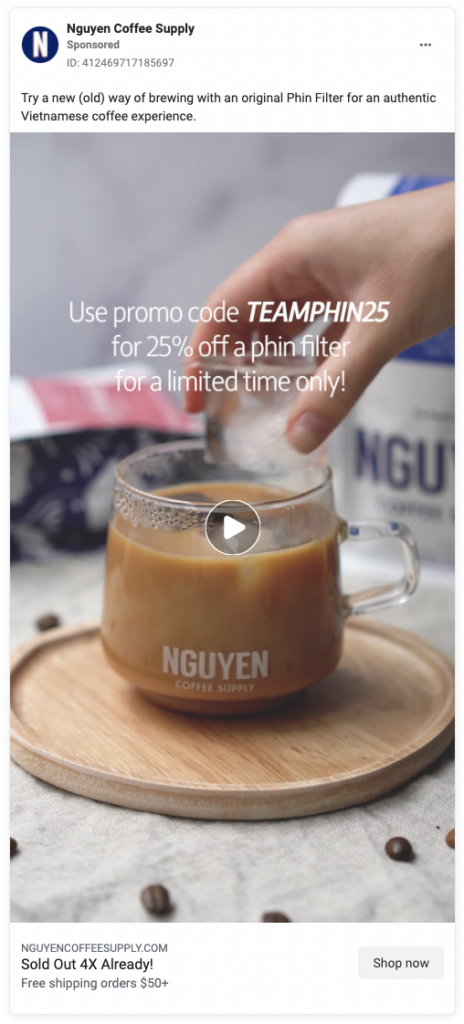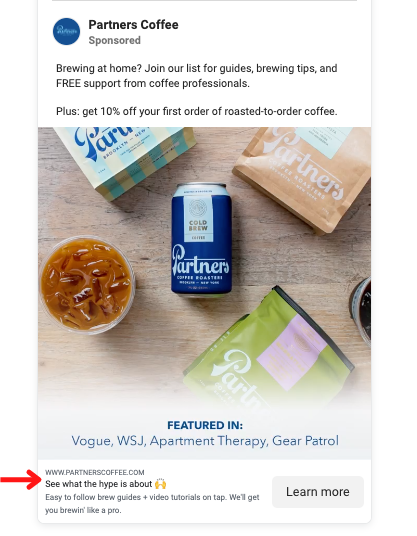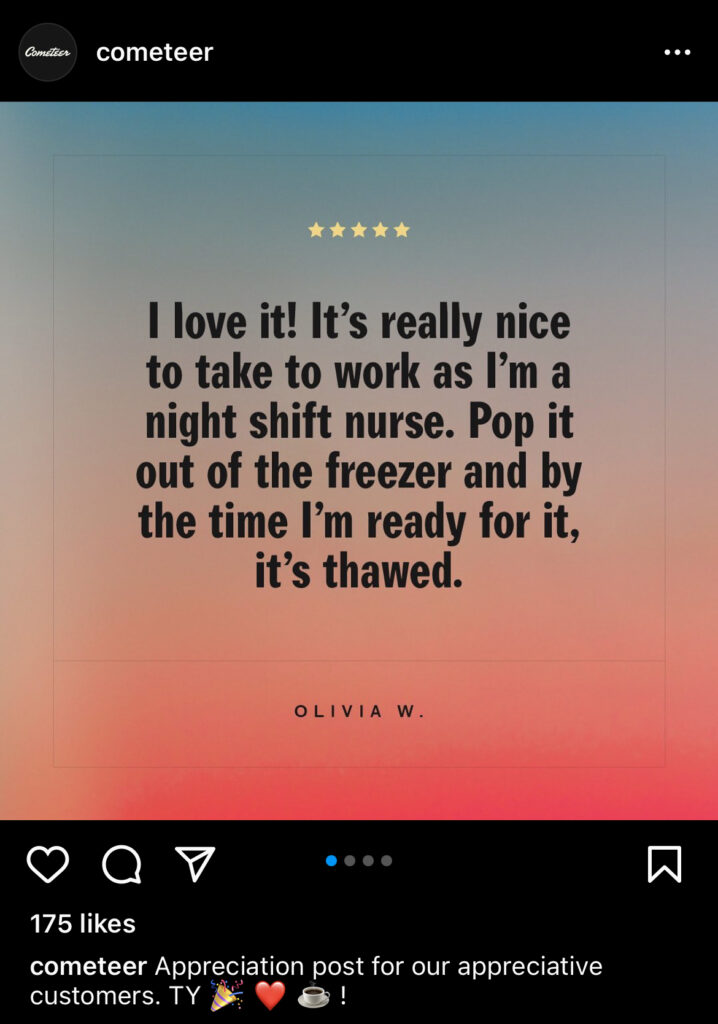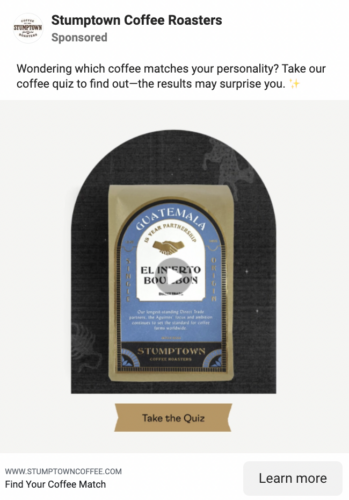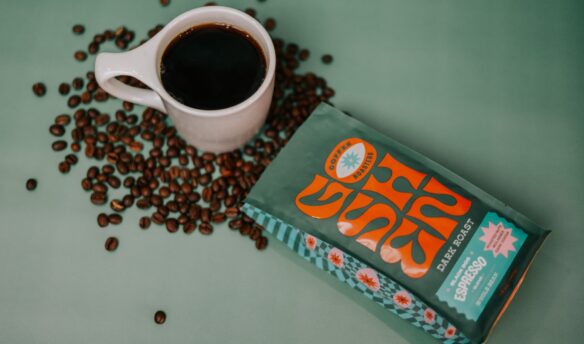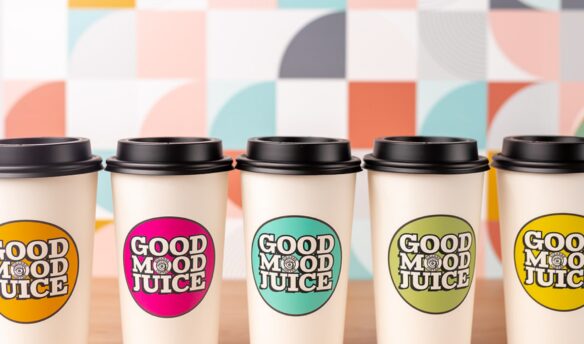In the book, All About Coffee, William Uckers notes that one of the first coffee advertisements was a 1587 manuscript by Abd al-Kadir titled “Argument in Favor of the Legitimate Use of Coffee.” In 1652, Pasqua Rosée printed the first English-language coffee advertisement in a handbill for the coffee house he owned in London.
Fast forward a few centuries, and coffee advertising is everywhere. While today’s advertisements are in the form of a TikTok video or Facebook ad and not a distributed pamphlet, the way we talk about coffee hasn’t changed all that much.
Take this vintage sign for Freihofer Baking Company’s ground coffee delivery service from the 1930s:
Sounds like every coffee subscription service on the market today, right?
Coffee advertising tends to repeat the same tropes over and over.
“We only serve the freshest coffee…”
“We travel to the best coffee farms across the globe…”
“Roasted in small batches by an expert team…”
“Never run out of coffee again…”
As competition in the specialty coffee industry continues to rise, a stellar product will only get a company so far. Naturally, companies will use branding and advertising to differentiate themselves. But, differentiation will be challenging if we all continue repeating the same recycled messaging.
We’ve analyzed six coffee ads and why they work to help you craft creative and effective advertising without succumbing to the same old marketing phrases.
Nguyen Coffee Supply
Why It Works: Education & Urgency
One of the most commonly used phrases in coffee marketing is “100% Arabica.” All this means is that the product doesn’t contain robusta beans, but somewhere along the line, customers began to believe this phrase was a standard of communicating “quality.”
But, as we know, the quality of robusta beans has improved significantly in recent decades (and specialty grade robusta coffee is downright delicious).
To combat these unfounded notions about robusta coffee beans, Nguyen Coffee Supply uses advertising to educate viewers about the product, brewing method, and origin.
While the video focuses on education, the link copy—” Sold Out 4X Already!”—is responsible for creating a sense of urgency. Customers now know Nguyen Coffee Supply’s coffee has sold out several times and better act fast if they want to try it!
Partners Coffee
Why It Works: Reciprocity
In advertising, reciprocity refers to the concept that customers feel the need to return a company’s kind gesture with a purchase.
Partners Coffee is offering those who subscribe to its newsletter access to free brewing resources and support from coffee experts. They’ve also added a 10% off coupon to sweeten the deal.
By offering two generous gifts—free coffee resources and an order discount—Partners Coffee increases the likelihood that customers will return the favor with a purchase.
Pay attention to how Partners uses the headline and text space. The copy reinforces why customers should sign up for the newsletter by emphasizing how Partners will get them brewing like an expert in no time.
Bellwether Coffee
Why It Works: Problem & Solution
One of the most basic and powerful advertising tactics is showing why your product or company is the answer to a customer’s problems.
Coffee roasting is complex. Beyond learning the chemical reactions happening inside the bean and how to manipulate the equipment accordingly, there is an entire business and supply process a roaster must understand to be successful. Before you can sell your first bag of beans, it takes a great deal of time and resources to master the coffee roasting process.
Bellwether uses its ad to communicate why its product is the solution to common roasting problems, including hefty equipment requirements, extensive training times, and potentially harmful effects on the environment. Bellwether’s solutions may entice customers who don’t have the time or space to traditionally roast coffee.
Cometeer
Why It Works: Social Proof
Social proof is a term coined by Robert Cialdini, author of Influencer: The Psychology of Persuasion. This concept refers to looking at others’ behavior to determine the correct course of action in a specific situation.
Essentially, if we see others doing something in an uncertain situation, we believe it is the right thing to do. So, if we see customers leaving 5-star reviews for a coffee subscription, we’re more apt to purchase this subscription.
Which statement do you have an easier time believing?
Coffee Company: “Our lightning-fast shipping gets coffee to your door in 24 hours.”
Subscription Customer: “I was thrilled with how fast Company A got the coffee to my doorstep. I was brewing my coffee within 24 hours of ordering!”
The reason Cometeer’s ad works isn’t the novel product concept, but the customer testimonials. These reviews demonstrate Cometeer’s value to consumers through social proof from existing customers.
Stumptown Coffee Roasters
Why It Works: “We” vs. “You” language.
You might think an advertisement is a perfect place to talk about yourself. It’s not.
Leave the “we” talk for your website’s “About Page.” Let the ads showcase the “how” or the “why” behind your coffee.
Stumptown Coffee Roasters could have easily said, “Look at how many different coffees we sell!” Instead, they used customer-centric language and focused the ad on matching the coffee selection to the customer’s personality.
When devising an ad for your coffee company, avoid shining the spotlight on yourself. Demonstrate the value or benefit a customer will receive from your coffee.
For example, rather than saying, “We spend hours on coffee quality control each week,” use language like “Coffee excellence you can rely on for a great morning, every morning.”
Loring
Why It Works: Benefits > Features
One of the most common advertising mistakes companies make is focusing on a product’s features. Advertising the features of a product won’t convince a customer to make a purchase, and customers want to know what benefits they’ll derive from those specific features.
Loring’s ad succinctly and powerfully answers the question “Why buy an S15 Falcon roaster?” without diving into the nitty gritty details of the machine’s features like a vacuum elevator and touchscreen automation capabilities.
Loring’s ad design and copy make it so customers quickly understand that this roaster will help them roast coffee efficiently and consistently.
Make a Statement With Your Coffee Ads
Even after more than a century of industry innovation and growth, coffee advertising remains stale. The brands above demonstrate how to get your message in front of consumers through creative copy and effective tactics. With so much room for ingenuity while still being strategic, crafting a distinct brand voice—and marketing that supports a cohesive vision—can help you stand out in an often crowded and homogeneous market.
Photo by Jojo Yuen on Unsplash
Anne Mercer is a freelance writer specializing in helping brands and individuals carve out their space in the specialty coffee industry. She is also the co-owner of Victus Coffee, based in West Hartford, Connecticut. Visit her website at annemercer.com.




